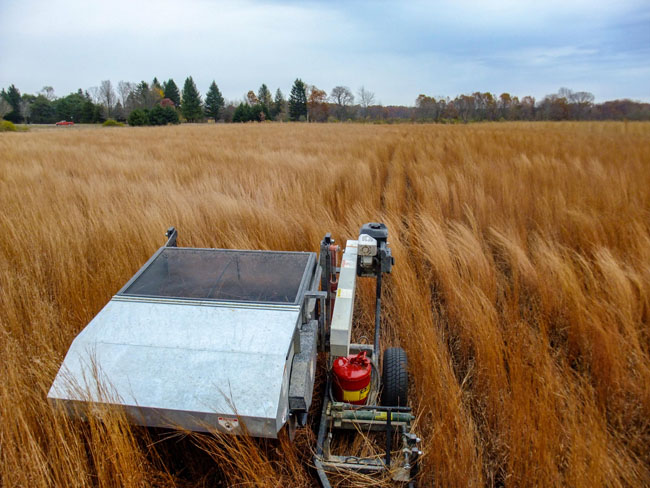REGION – Native seed planting has been used by the stewardship unit of the Michigan Department of Natural Resources Parks and Recreation Division as a tool to repair degraded landscapes.
This planting can help fill in gaps where there is not a native seed bank available or nearby native plants to naturally seed areas.
Historical losses
Over the past couple hundred years, American settlers have greatly reduced prairie with modern agriculture and urban development, introduced invasive species, eliminated large herbivores and reduced wildfire on the landscape that depended on it.
Consequently, native grasslands have been reduced, by some estimates, to as little as 1% of their former abundance in the United States. There is less than 1% remaining of oak and pine savanna communities, which is transitionary between forest and prairie.
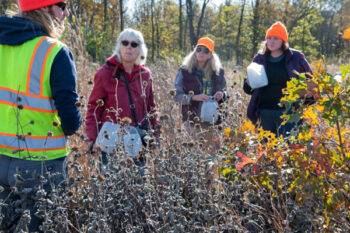
Although these communities were more dominant in states west of Michigan, they have been an important part of our landscape and have supported a high degree of biological diversity in Michigan since the end of the last ice age.
Grasslands and savannas are targets for restoration, through seed planting by the DNR and other conservation partners in Michigan, in efforts to recreate grasslands that are beneficial ecologically and recreationally.
These important places can provide habitat for rare grassland bird species, create a home for uncommon native prairie plants and support declining pollinator populations.
Furthermore, they provide natural vegetation that takes up carbon from the atmosphere and can help protect waterways by reducing runoff pollution. In addition, grasslands provide important areas for the public to enjoy wildflowers, birdwatch and hunt species like the ring-necked pheasant.
Several sites have been planted in Michigan state parks to realize these benefits.
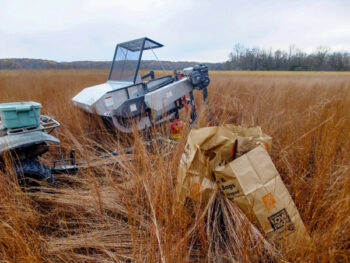
The sites planted include old agricultural fields, former gravel mines and other degraded places. Parks where plantings have occurred include Fort Custer Recreation Area in Kalamazoo County, Lake Hudson Recreation Area in Lenawee County, Highland Recreation Area in Oakland County, Sterling State Park in Monroe County, Algonac State Park in St. Clair County and Bay City State Park in Bay County.
New efforts are underway to restore portions of the Fort Custer Recreation Area, Waterloo Recreation Area in Jackson and Washtenaw counties, Coldwater Lake State Park in Branch County and Island Lake Recreation Area in Livingston County.
Selecting and collecting
When deciding which seed to plant, what is most ecologically appropriate and best adapted for the site are very important considerations. Local seed from plants already growing in the park, or somewhere nearby, are preferred over nonlocal sources of seed.
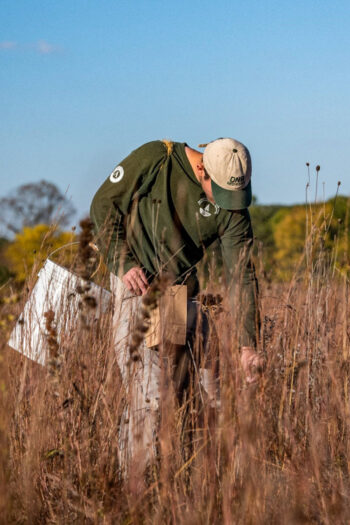
One reason is that local plants have already adapted to grow in similar soils and in the same climate for thousands of years. Seeds from local sources also represent a unique set of genes that are on their own evolutionary trajectory. Preserving that unique variety is important for the goal of protecting biodiversity in Michigan.
Unfortunately, not much local seed is available for purchase, so it must be collected by a team of state park stewards. Native seed is collected by several DNR staff members and dedicated volunteers.
This team possesses a specialized skill set for acquiring seed from a diverse group of species. Seed is collected from remnant populations, from areas planted in the parks with local seed and from seed propagation plots.
A DNR stewardship wildlife technician collects large quantities of native, warm-season grass seed by pulling a seed-sweeper behind an all-terrain vehicle.
Volunteers and members of the Michigan Civilian Conservation Corps harvest various species of wildflowers, native grasses and grass-like species called sedges and rushes.
Native seed collection starts as early as late May, continues through the growing season and peaks in the fall. Harvesters maintain genetic diversity by collecting from multiple local populations and plants from the same species with different traits.
Most importantly, existing plant populations are conserved by collecting no more than half of the available seed each year.
Prepping and planting
After seed has been collected, it must be prepared for planting by the Michigan Civilian Conservation Corps crew at a facility within the Brighton Recreation Area in Livingston County.
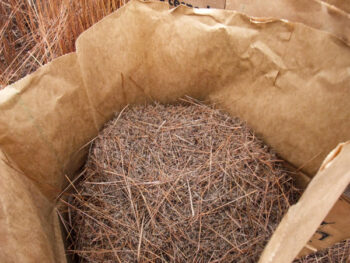
Much of the seed throughout the season gets collected quickly and crudely before it drops, and therefore is not in a state that is ready to plant. In preparing the seed for planting, the first step is drying seed material to make sure that it does not mold and lose its viability.
Some of the seed collected needs to be dislodged from seed heads to make it easier to disperse. Also, materials such as stems, leaves and other parts of plants need to be sifted out so that the seeds can go through planting equipment.
Breaking up and sifting material, known as seed cleaning, requires specialized machines and hand equipment.
Furthermore, this process is important for the staff to gain a truer sense of how much seed will be planted. They can use this information to monitor results and refine future restoration practices.
After seed has been cleaned, weighed, inventoried and mixed, it is ready to be planted.
Most of the seed will be planted using a specialized machine called a seed drill, which is pulled behind a tractor. This method provides good coverage and protects the seed from bird predation.
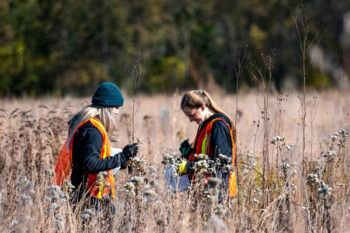
Some areas will be broadcast by hand because of the small seed size, steep topography or slight amounts of seed to be planted. Planting occurs either in the spring or in the late fall.
Joining the team
If you are interested in helping the DNR plant areas in these state parks, there are many ways to be a part of the team.
One way is to attend a seed collection workday at one of our state parks in October or November. Please refer to the DNR volunteer calendar at Michigan.gov/DNRVolunteers for more information.
If you have good plant identification skills, you can volunteer to collect seeds as an individual. Please reach out to volunteer coordinators Kelsey Dietz or Emily Leslie to learn more about individual seed collection needs.
It’s very important to properly maintain areas where seed is collected by joining volunteer efforts to remove invasive species. Please join our other volunteer efforts to remove invasive plants throughout the season. These opportunities can also be found listed on the DNR volunteer calendar.
Looking at the historical record of centuries-old negative impacts on native plant communities, the efforts to revitalize these places through the aid of seed-planting will likely continue for the foreseeable future.
Planting seeds today can invest in important ecological and recreation areas for today, tomorrow and years to come.
Story by: Tom Tucker, Parks and Recreation Division, Michigan Department of Natural Resources


